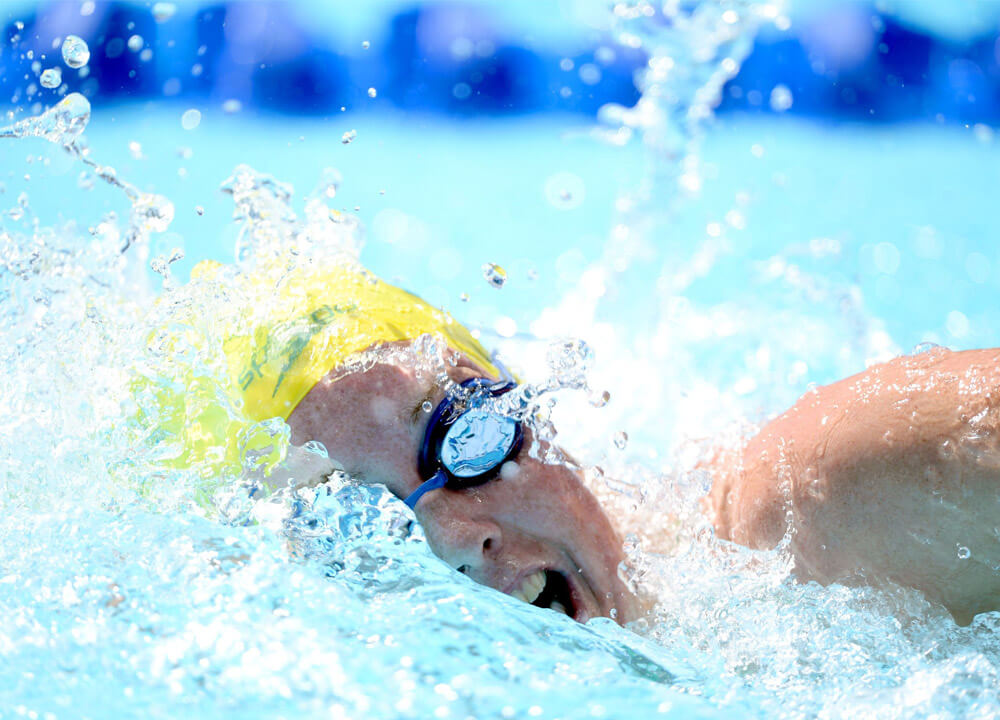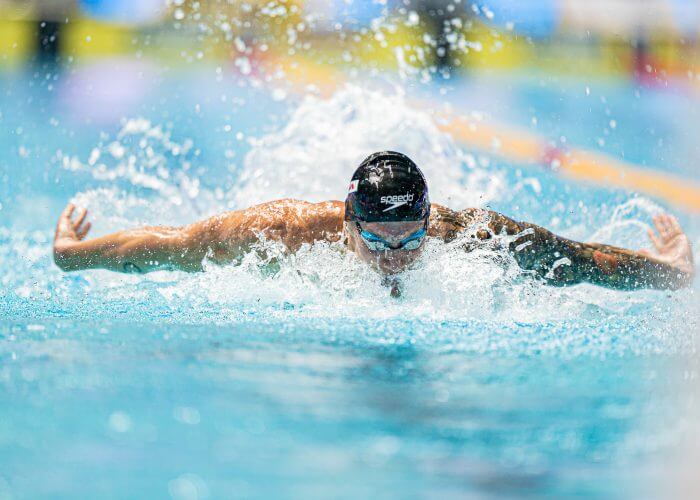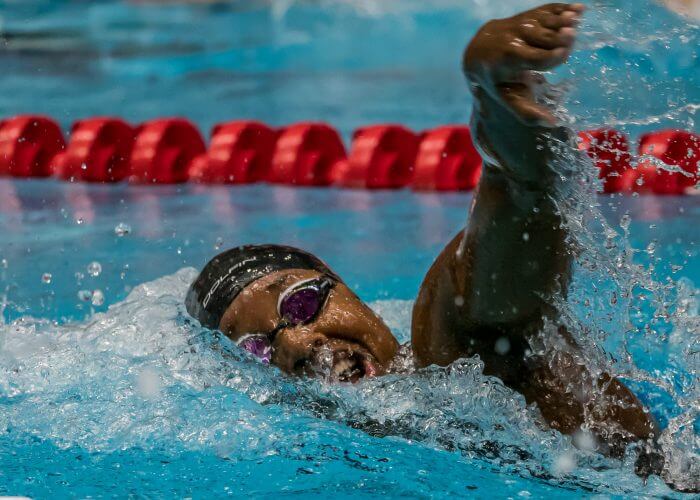Air is Overrated! Breath Control for Sprinters

By Danny Whirlow, Swimming World College Intern.
For sprinters, a race can be over in a flash, so quick that it sometimes is counterproductive to take a breath. Yes, that’s right, that one thing swimmers of all strokes can’t get enough of, consider doing it less. The next best strategy for sprinters could be avoid breathing, or doing so at a reduced rate. Now, this strategy may not be for everyone; frankly, it may not even be possible for everyone. Nonetheless, in sport where emphasis is placed on when to breathe and how to strengthen breathing during a race, it’s crucial to ask how often a swimmer should breath at all.
Respect Breath Control Sets
It would be negligent to ignore the obvious safety risk of undertaking a strategy of little-to-no breathing. Should swimmers deprive their brains of oxygen for too long, they can experience a loss of consciousness, or a “shallow water blackout.” And if there is no immediate rescue, death by drowning is unavoidable.

However, there is a way to train in a no-breathing way responsibly and safely. It starts with what coach Cokie Lepinski stresses as a distinction between “breath control” and “breath holding.” She tells U.S. Swimming Masters that she trains her swimmers to “work against the human body’s inclination to hold our breath when our face is in the water.”
“In fact, I talk about how important it is to exhale each time your face is in the water. ‘Breath control,’ if not properly defined, is interpreted as ‘breath holding.’”
In the same article, triathlete and physician Kip Kircher supports Lepinski’s distinction. He notes that prolonged breath-holding creates an imbalance between oxygen and carbon dioxide in the blood. This imbalance throws off the body’s natural responses to low O2 or high CO2, which in turn lead to shallow water blackouts. To avoid distress, Kircher also recommends swimmers make a conscious effort to exhale air slowly while their faces are submerged.
No Air, No Problem?
Though the risks may be great, strengthening breath control can allow for sprinters to swim a more economical race. Sprinters already take less breaths than other swimmers, but when they do breathe, it could ruin their entire event. If sprinters breathe incorrectly, they risk disrupting their bodyline or balance, subsequently increasing drag and slowing them down.

Photo Courtesy: Becca Wyant
In the 50 Freestyle, these errors can be the difference between winning and losing. So why not eliminate the chance to make them altogether? Such a short event requires little oxygen anyway, instead drawing on stored energy and the anaerobic system. Coaches can challenge their sprinters to swim 5os with less oxygen by creating sets that limit how many times they can breath per length. This kind of set would attune sprinters to the discomfort of low O2 while also obeying the aforementioned distinction between breath control and holding.
Breath Control for the Long Haul
After 20-30 seconds of consistent exertion, a swimmer’s body will begin to draw on the anaerobic AND aerobic systems. Oxygen becomes crucial in events like the 100 Freestyle and 100 Butterfly, but it still can be moderated. Sprinters should substitute long gulps for air with short, quick breaths. And if sprinters are comfortable with less 02, they can prolong how they breathe in this way during a race.

Photo Courtesy: Peter H. Bick
In another article for the U.S. Swimming Masters, writer Scott Bay offers a set that would help sprinters maximize both their breathing capabilities and their technique with what he calls the “Countdown Drill.”
Swim 25s at maybe 90 percent of race pace. Start with breathing four times per 25 and reduce by one breath during each subsequent 25. The key is to not hold your breath but learn how to relax those parts of your body that are not helping you swim faster. This is breath control NOT breath holding. Repeat this several times with however much rest you want until you find the oxygen your body needs to perform at a high level.
It bares repeating that not every swimmer may be able to utilize this reduced breathing strategy; however, experimenting with it may be what allows some sprinters to take their swimming to the next level!
How often do you like to breath during your races? Comment below!
All commentaries are the opinion of the author and do not necessarily reflect the views of Swimming World Magazine nor its staff.




Kayla Newman